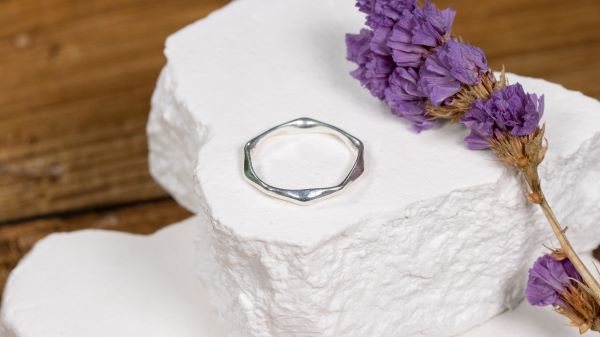Resizing a basic band ring in the realm of jewellery design requires precision and attention to detail. With Rhino 3D, a powerful CAD software, this task becomes manageable even for beginners. Whether you’re adjusting the size for a custom order or personal use, this blog post will walk you through the specific steps to accurately resize a basic band ring using Rhino 3D.
Step 1: Open Your Design
Launch Rhino 3D and open the design file of the ring you intend to resize. Make sure that the ring design is visible in the Rhino workspace.
Step 2: Assess the Ring Design
Before making any modifications, carefully examine the existing ring design. Identify the key elements, such as the band width and any decorative features, that need to be adjusted during the resizing process.
Step 3: Select the Ring Geometry
Use Rhino’s selection tools to choose the ring’s geometry. This typically includes selecting the curves that define the outer and inner edges of the band. You can use the “Select” or “SelID” commands to make precise selections.
Step 4: Access the Scale Command
Navigate to the top menu and select “Transform” > “Scale.” You can also type the command “Scale” in the command line or use the keyboard shortcut associated with scaling.
Step 5: Specify the Base Point
Upon selecting the scale command, Rhino will prompt you to specify a base point for scaling. Choose a point that aligns with the center of the ring or a reference point that ensures even resizing.
Step 6: Define the Scale Factor
With the base point established, enter the desired scale factor in the appropriate field. To decrease the ring size, enter a scale factor less than 1.0; to increase the size, enter a factor greater than 1.0. It’s essential to maintain proportions to avoid distorting the design.
Step 7: Confirm and Apply Scaling
Once you’ve set the scale factor, press “Enter” or click the mouse to confirm your selection. Rhino will apply the scaling transformation to the ring geometry, effectively resizing the band while preserving its proportions.
Step 8: Review and Adjust
Thoroughly examine the resized ring to ensure that the band width, proportions, and any decorative elements match your design intent. Make any necessary adjustments before proceeding.
Step 9: Save Your Modified Design
Once you’re satisfied with the resized ring, save your changes to the existing design file or create a new version. This step is crucial to preserve both the original and resized versions of your design.
Step 10: Test and Validate
Before finalizing the resized design, test it in various viewing modes and perspectives. Ensure that the modifications are accurate and visually appealing from all angles.
Resizing a basic band ring using Rhino 3D requires a systematic approach and attention to detail. By following these step-by-step instructions, you can confidently modify the size of your ring design while maintaining its aesthetic integrity and precision. Rhino 3D’s versatile scaling tools empower you to achieve accurate results, making it an invaluable asset in the realm of jewelry design. Remember to save your progress and test the resized ring thoroughly to ensure it aligns with your vision before sharing it with clients or incorporating it into your collection.

Amarah Mann

